Hibiscus Tea Is the Belly-Flattening Brew That Protects Your Heart and Fends Off UTIs
A nutritionist explains how this delicious tropical brew helps get more oxygen to tissues to burn fat
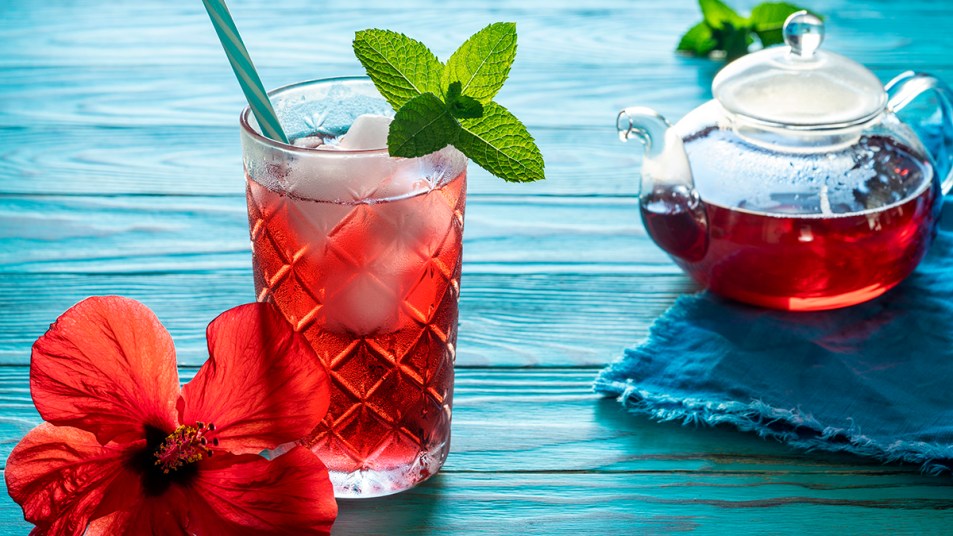
Out of all the trending superfoods in the world of health and wellness, perhaps none is as beautiful as the hibiscus flower. That’s right: The pretty pink flower we all know and love is not only edible, it’s also a nutritional powerhouse. It’s even a hit with celebs — Grey’s Anatomy star Ellen Pompeo said she loves treating herself to a cup of the tropical sip. Hibiscus tea is bursting with so many health benefits that more and more women are making it their go-to beverage. Find out how hibiscus can blast bloat, lower your blood pressure, block UTIs and more — and how to make your own homemade brew.
The health benefits of hibiscus tea
Hibiscus is a flowering plant found in tropical climates throughout the world, and there hundreds of different species. But the variety most often used to make tea, roselle (or Hibiscus sabdariffa), is native to west Africa. It produces lush, white petals and crimson-hued sepals (the part of the plant that surrounds the petals). The petals, sepals and leaves are all edible. While brewing up a cuppa is the most common way to enjoy hibiscus, the flower is also used in sauces, jams, salads and even stews.
What makes hibiscus tea so special? It boasts high levels of the antioxidant plant pigment known as anthocyanins, which gives the plant’s sepals their hue. What’s more, hibiscus tea is naturally high in vitamin C and polyphenols, and it has antibacterial properties. No wonder it’s one of nature’s best health-boosting sippers! Ready to see what hibiscus can do for you?
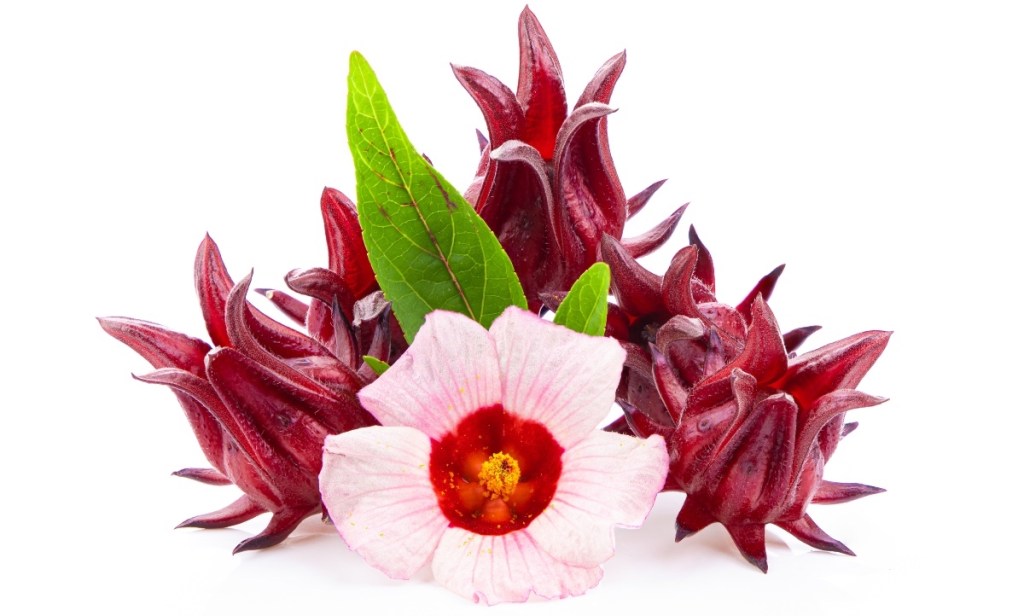
1. Hibiscus tea lowers blood pressure
In a study published in the Journal of Nutrition, researchers had folks with high blood pressure age 30 to 70 years old drink three cups of hibiscus tea daily for six weeks. At the end of the study, those who sipped the brew daily lowered their systolic (top number) blood pressure by more than 7 points and their diastolic (bottom number) blood pressure by more than 3 points. What’s more, they lowered their mean arterial pressure, the average pressure in the arteries, by nearly 5 points. And that was all achieved without changing their diet or exercise routines.
Hibiscus is a triple threat when it comes to lowering blood pressure. It acts as a diuretic to flush excess pressure-spiking salt, it opens arteries for improve blood flow, and the slows the release of hormones that constrict blood vessels. (Click through to our sister publication to see the 20 best blood pressure hacks for keeping your numbers in check.)
2. Hibiscus tea tames high cholesterol
Hibiscus tea has also been touted for its ability to help rein in high cholesterol levels. A review of studies published in the journal Fitoterapia suggests drinking up to three cups of hibiscus tea daily lowered folks’ “bad” LDL cholesterol levels considerably. And a separate study in ISRN Gastroenterology found those who drank hibiscus tea boosted their “good” HDL cholesterol levels 35% more than those who drank black tea. Hibiscus tames oxidative stress and inflammation that can contribute to plaque build up in arteries.
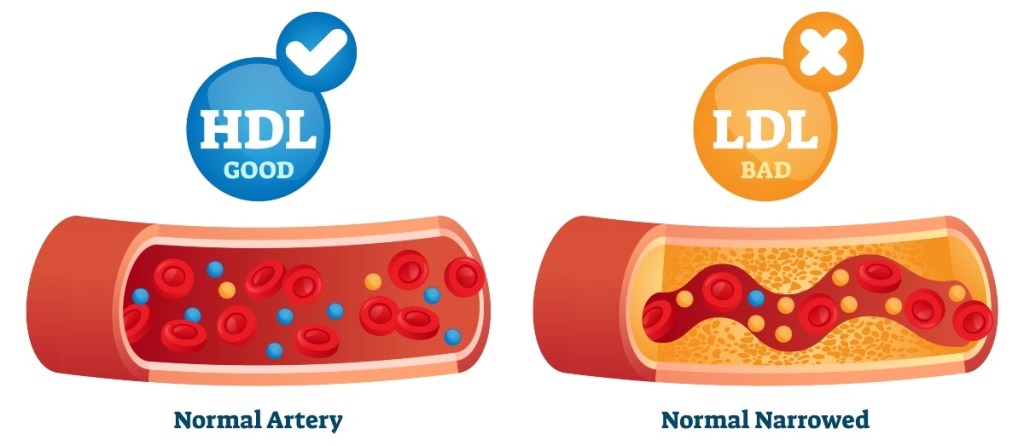
3. Hibiscus tea steadies blood sugar
Because hibiscus tea encourages healthy blood pressure and cholesterol levels, it’s also a smart choice when it comes to blocking blood sugar swings. A study published in the Journal of Complementary and Alternative Medicine found hibiscus tea (also known as sour tea) lowers both blood sugar levels and lipid levels in the blood.
Credit goes to hibiscus’s anthocyanins and flavonoids. These two compounds inhibit the activity of an enzyme known as as alpha-glucosidase, which breaks downs complex carbs into simple sugars. This slows the absorption of glucose in the bloodstream to fend off post-meal blood sugar spikes.
4. Hibiscus tea lowers body fat
Researchers reporting in the journal Food & Function found that supplementing with hibiscus daily significantly reduced fat accumulation. In fact, folks lost over 3 pounds in 12 weeks without making any other lifestyle changes. Plus, they trimmed more than a third of an inch off their waist and noticeably reduced their body fat percentage.
How does hibiscus tea help power off pounds? It’s micronutrients open up blood vessels, “helping more oxygen get to our tissues to burn fat,” explains Michelle Schoffro-Cook, PhD, DNM, author of Super Powered Immunity. Plus it lowers inflammation and helps curb hunger pangs so you’re less likely to overindulge.
5. Hibiscus tea tames belly bloat
Notice your abdomen seems a little puffy lately? While it can be caused by salty foods or gas, swelling is also quite common in the early stages of perimenopause. Progesterone, which has diuretic effects, typically goes into decline before estrogen does. And since estrogen can increase fluid retention, a relative excess can result in the bloat and puffiness. It can take a year or more for estrogen to drop to levels that ease fluid retention naturally, explains Laura Corio, MD, author of The Change Before The Change. That’s where hibiscus tea can help. Dr. Corio says its chlorogenic acid, anthocyanins and flavonoids have a natural diuretic action that tames excess fluid retention.
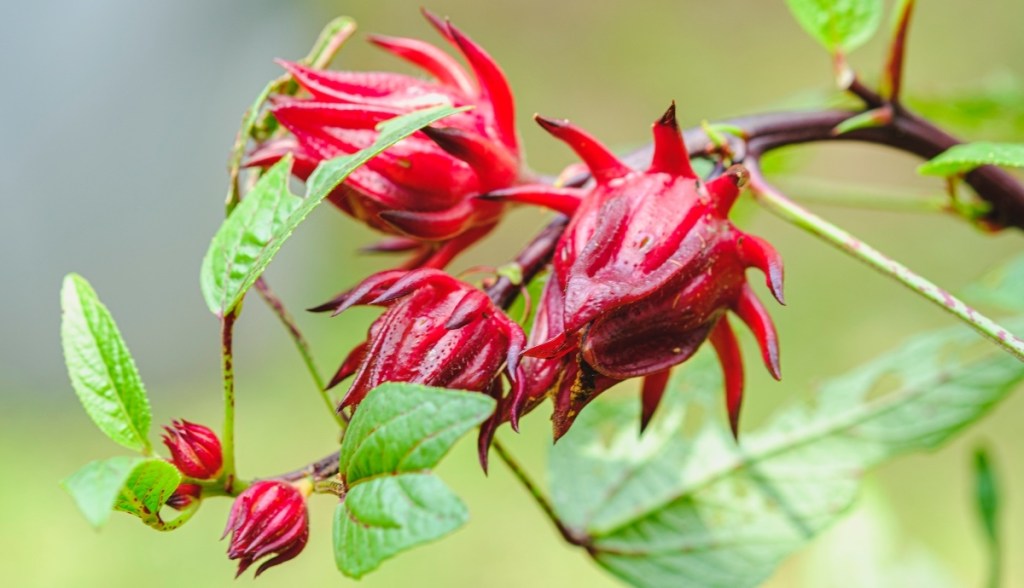
6. Hibiscus tea cures + prevents urinary tract infections
Whether you sip it hot or iced, hibiscus tea keeps your bladder free of infection-causing bacteria. Research in the Journal of Clinical Pharmacology found drinking the equivalent of two tall glasses (about 4 cups) of hibiscus tea each day can trim three days off your recovery time when you have a urinary tract infection (UTI). The brew prevents bacteria from sticking to bladder walls, explain nutrition experts Mira Calton, CN, and Jayson Calton, PhD, authors of The Micronutrient Miracle. When hibiscus’s anthocyanins are excreted through urine, they wipe out infectious bacteria in the bladder and urinary tract.
Plus, drinking the delicious brew can keep the bothersome infection from returning! Its flavonoid compounds have a natural antibacterial activity. And its gossypetin also prevents the formation of bacterial biofilms that can cause repeated UTIs. It’s so effective, researchers found hibiscus tea reduced the risk of recurrent UTIs by as much as 77%. (Click through for more UTI prevention supplements and what to do about a UTI that won’t go away.)
7. Hibiscus tea fends off colds and flu
Who knew? Hibiscus tea is nature’s secret against sick season! The tart-berry tea is loaded with ascorbic acid, or vitamin C, which helps improve the immune system, says women’s health expert Ann Louise Gittleman, PhD, author of several bestselling books including Radical Longevity. Ascorbic acid stimulates a reaction inside cells that kills viruses, then repairs the cells and strengthens them against future invasion. To get the benefits, Gittleman recommends sipping three cups of hibiscus tea (hot or iced) each day.
The best homemade hibiscus tea recipe
Ready to reap the rewards of this pretty red brew? While hibiscus tea is well tolerated by most, it can sometimes cause minor side effects such as GI upset. To make hibiscus tea, you can use Hibiscus Sabdariffa flowers from your own yard (be sure they’re pesticide-free!). You’ll need about 8 to 10 whole flowers, and the drying process can take up to three days.
To do:
- Remove the flowers off the hibiscus plant and discard the stamens from the center of the flower.
- Wash the flowers by either massaging them thoroughly under running water or swishing them around in a bowl of cool water. Use your fingers to separate the bottom part of the flower by pulling the petals apart slightly at the base.
- Secure the flowers to a drying rack or flat surface using thin wire. You will be drying the flowers outside or under the sun, so be sure they’re secure in case the wind picks up.
- Let the flowers dry in the sun for a few days, either outside (thisworks faster) or inside in a sunny spot. Bring the flowers inside at nighttime. Check them daily, and rotate if needed.
- Once the flowers are dried, steep the dried petals petals in a pot of boiling water for 5 to 10 minutes; strain before serving. Sweeten with honey to taste, if desired.
How to steep dried flowers
If you don’t want to wait, you’re in luck! You can still enjoy the best hibiscus tea you’ve ever had by opting for a brew made with dried hibiscus flowers. Simply steep the dried blooms in a mesh tea infuser in hot water for 5 to 10 minutes, then strain and sip. One to try: Frontier Co-Op Organic Hibiscus Sabdariffa (Buy from iHerb.com, $13.83).
The best hibiscus tea bags
Prefer the convenience of tea bags? You can choose the brand Ellen Pompeo loves: Traditional Medicinals Organic Hibiscus Herbal Tea (Buy from Amazon.com, 96 bags for $30). Or opt for another popular choice: FGO Organic Hibiscus Tea (Buy from Amazon.com, $19.99).
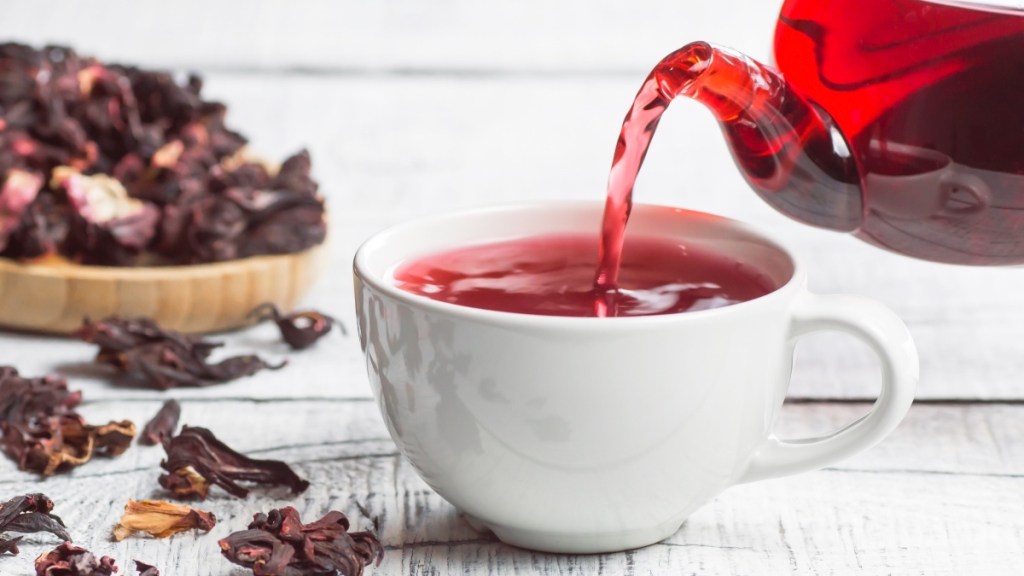
Read on for more delicious healthy teas to try:
The 6 Best Teas for Weight Loss That Aren’t Green Tea
The 2-Ingredient Iced Tea Proven To Power Off Over-50 Midsection Fat — Fast!
The ‘Lullaby’ Lavender Tea Guaranteed to Melt Stress and Deepen Sleep
Don’t Toss That Avocado Seed! Use It To Brew Up a Delicious, Heart-Healthy + Slimming Tea
















